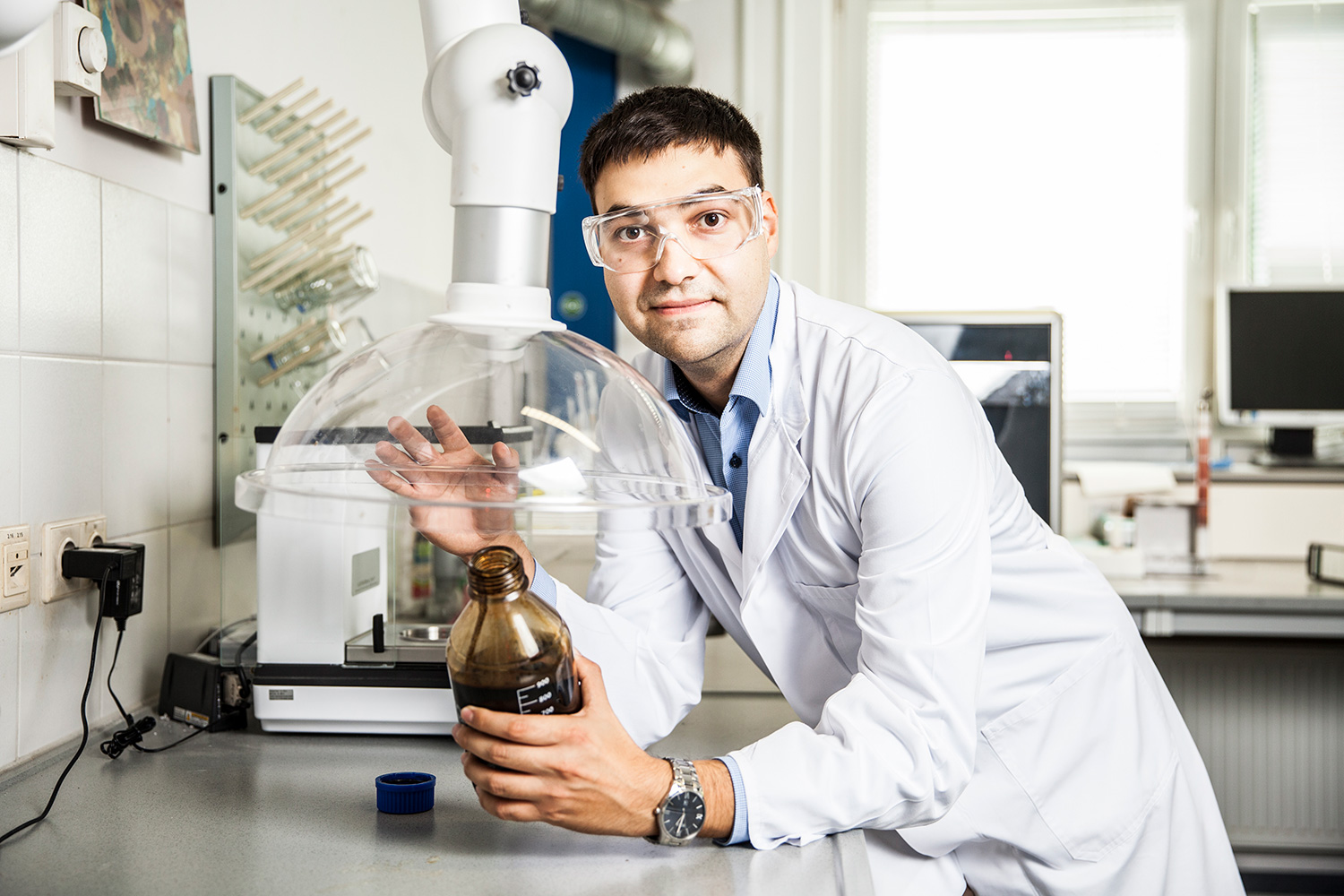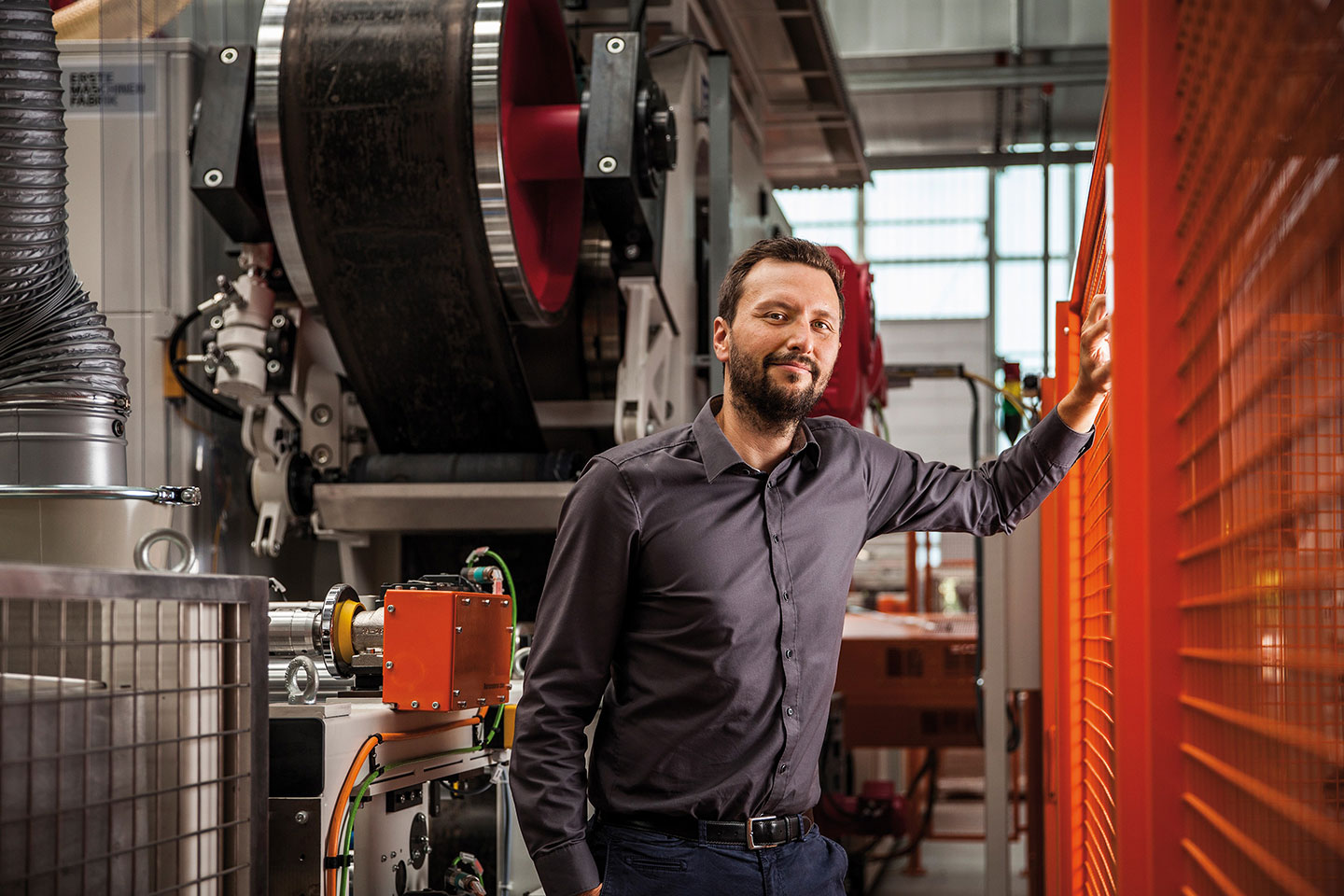The plastics recycling solution developed by Fraun-hofer UMSICHT and Fraunhofer Cluster CCPE has signif-icant potential. “Our goal is to establish a technology plat-form that will allow us to take post-consumer plastics and produce a raw material with virgin-material quality,” relates Dr. Hofmann. It’s something they have already achieved with rotor blades from wind power plants, for example − a waste stream with high plastic content. The problem here is that the materials are fiber composites. The experts slice the rotor blades into flakes of just a few centimeters in size, and then proceed as when recovering rare metals. The fiberglass is removed from the plastic matrix and used to make foam glass. Meanwhile, the pyrolysis oil contains the basic building blocks for plastic, either as molecules or monomers, depending on the source material. The researchers then use a suitable purification process to extract pure styrene or phenol from the oil. It is impossible differentiate between the styrene and phenol and virgin material based on chemical structure, so these can be used as raw material in the plastics industry. How can fiber composite materials be recycled?
The Fraunhofer Institute for Machine Tools and Forming Tech-nology IWU together with 21 partners from seven EU member states have been working on this question in the EU project FiberEUse since 2017. The team is focusing on three different basic principles: thermal recycling, mechanical recycling and component reuse. “Our team at Fraunhofer IWU have developed reusable structures, in collaboration with the companies EDAG and INVENT,” says Justus von Freeden, a Fraunhofer IWU scientist. “Fiber-re-inforced plastics with carbon fibers work really well here. They’re durable, fatigue-resistant and non-corrodible.” As examples, they tested the project out on two vehicle structures of no specific make or model; they reuphol-stered the substructure of a car seat and produced a base frame for an electric car platform. As an interim solution for checking the quality of the composite materials, the researchers used non-destructive testing technologies, such as ultrasound and thermography.
Meanwhile, in the lighthouse project Waste4Future, seven Fraunhofer-Gesellschaft units are coming together to pursue their objective of making carbon from plastics fully recyclable. Currently only 50 percent of plastics, such as PET bottles, are recycled, while the remainder is burned. “We examine the material flows, divide them into subflows and determine the cheapest suitable processing route,” says Dr. Sylvia Schattauer, Deputy Institute Director of the Fraunhofer Institute for Microstructure of Materials and Systems IMWS, and head of the Waste4Future project. “The individual technologies needed for that do not have to be developed from scratch; they just need to be scaled up and cleverly combined.” To do this, the research team has created a kind of technology ladder − the expertise for each individual “rung” already exists at the institutes. The first step is to process everything that can be sep-arated mechanically. Anything that cannot be taken out mechanically moves on to the next stage, namely physical-chemical separation − at this point, the recycled pellets and basic molecule chains can be produced. The final remainder moves on to the chemical-thermal processing stage, which produces pyrolysis oil and syngas; these can be processed to form new plastics using green hydrogen.
“Dumping all the material into chemical recycling makes no sense, because that requires very high quantities of energy. It’s only worth using chemical processes for material flows that can’t be recycled any other way,” says Dr. Schattauer. Ideally, this will result in an evalua-tion model that companies can use to assess their material flows. A new and important aspect of the platform is that it also takes cost-effective evaluations into account. This means the calculations include factors such as source material scarcity, the price of crude oil and new plastic pellets, and the capacity of the production methods.

